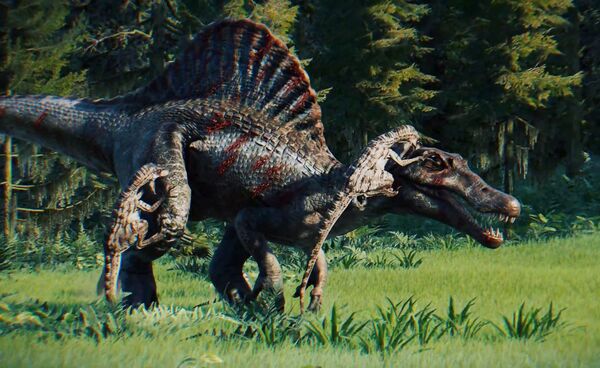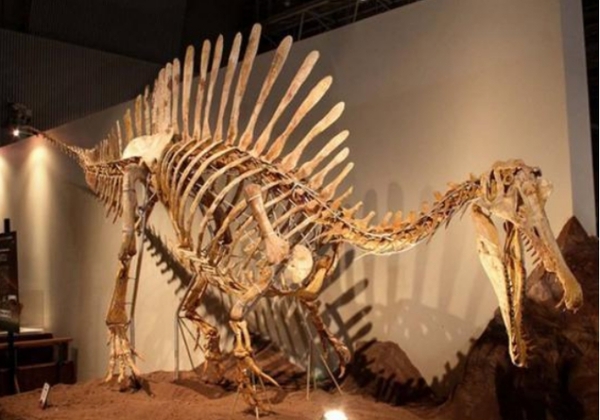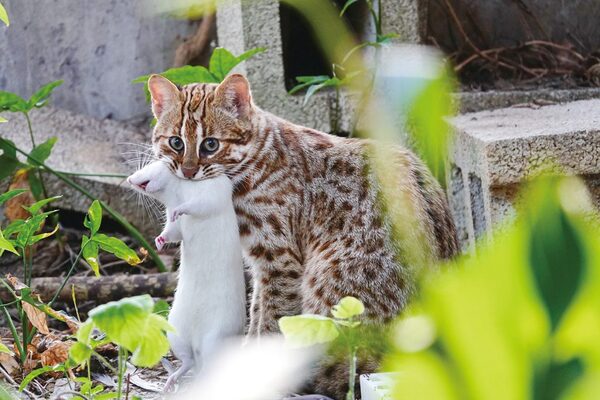Spinosaurus
IUCN
ENBasic Information
Scientific classification
- name:Spinosaurus
- Scientific Name:Spinosaurus, Ridgeback
- Outline:Carnivora
- Family:Spinosaurus-aegyptiacus Spinosaurus Theropoda Saurischia Chordata
Vital signs
- length:10-17m
- Weight:3-10 tons
- lifetime:
Feature
Huge body, a sail-like structure formed by long spines on the back, and an elongated skull
Distribution and Habitat
Most of North Africa
Appearance
Long, narrow skull with a narrow snout and straight, conical teeth
Details

Spinosaurus (scientific name: Spinosaurus, meaning "spiny lizard"), also translated as Spinosaurus, Ridgeback Dragon, is a theropod dinosaur. The first fossil of Spinosaurus was discovered in the Bahariya Oasis in western Egypt in 1912. In 1915, Stromer officially named the giant carnivorous dinosaur he discovered Spinosaurus, which means "spiny lizard", from its super long dorsal neural spines. The type species of Spinosaurus is named [Spinosaurus aegyptiacus], and the species name represents Egypt where the fossils were discovered.
It lived in northern Africa during the Cretaceous period, about 114 million to 93.5 million years ago. It is estimated that Spinosaurus was 14 to 15 meters long, about 2.1 to 4.8 meters high, and weighed 6 to 9 metric tons. Spinosaurus is one of the largest and longest known terrestrial carnivorous dinosaurs, but its weight is lower than that of Tyrannosaurus or other large theropods; and because Spinosaurus walks on all fours, its hip height is lower than that of other large theropod predators of similar size.
The average individual Spinosaurus is 12 meters long and weighs 5 tons. The largest Spinosaurus is 15 meters long and weighs 10 tons.
Spinosaurus was first discovered in Egypt by German paleontologist Ernst Stromer in 1912. The original specimen was bombed by Allied fighter planes in the Berlin Museum in Germany during World War II. The time from discovery to bombing was very short. In 2010, other fossils of Spinosaurus' skull, claws, arms, tail cone, head crown and other body parts were discovered. It is still not entirely certain whether there are one or two species of Spinosaurus, the most famous of which is S. aegyptiacus, discovered in Egypt in the 20th century, and the second species, S. marocannus, discovered in Morocco in the 21st century, whose validity is still questioned.
The head is 1.75 meters long, which is longer than that of Tyrannosaurus and second only to the 1.92-meter head of Giganotosaurus. More like a crocodile, its mouth is long and narrow, with a prominent cleft at the lower edge of the front of the maxilla. Spinosaurus' eyes are located on both sides of the head, the front of the snout is slightly bulging, and there is a bony protrusion above the eyes, which is a small crest.
The mouth of Spinosaurus has a large number of conical teeth, which are slightly curved backwards, and there are longitudinal grooves around the teeth with straight conical teeth. The teeth lack serrated edges, similar to other spinosaur dinosaurs. Each premaxilla has 6 or 7 teeth, and each maxilla has 12 teeth. The second and third teeth of the premaxilla are significantly larger, while the other teeth are slightly smaller. Spinosaurus teeth are large, with many teeth exceeding 10 cm in length, and the largest reaching 22 cm. A gap is formed between the premaxilla teeth and the large teeth of the maxilla; this gap matches the large teeth of the mandible. From the appearance, Spinosaurus teeth are more suitable for piercing rather than cutting.

Huge body, sharp teeth, and curved large claws are all the magic weapons that Spinosaurus has to sit firmly on the throne of the largest carnivorous dinosaur.
Teeth are an important hunting tool for Spinosaurus. In addition, it has another hunting weapon, which is the huge claws on its forelimbs. Spinosaurus' forelimbs are up to 2 meters long, and the first finger on its hand is 40 cm long. Imagine how much damage Spinosaurus's large claws will cause when it hits you.
The tall dorsal sail on the back of Spinosaurus is also the reason for its name. There are obvious long spines on the back, which are composed of very tall neural spines. They are formed by the extension of the neural spines of the vertebrae. These neural spines extend from the back vertebrae. The length is about 7 to 11 times that of the vertebrae, and can reach 2.2 meters. The length of these neural spines is relatively consistent from front to back. It is inferred that there is a skin connection between the long spines, forming a huge sail-like object; however, in the early days of the fossil discovery, some scientists believed that these long spines were covered with muscles, forming a ridge or a dorsal ridge. There are currently several views on the function of this sail-like object, including regulating body temperature and visual display. Some researchers have proposed that the dorsal sail of Spinosaurus is used to attract the opposite sex, and its dorsal sail may have bright colors. Other scholars believe that the dorsal sail of Spinosaurus can help hunting. The shadow formed by the dorsal sail in the water will attract fish to approach, and then Spinosaurus can launch an attack. The skull of Spinosaurus is long and wide but shorter, and its appearance is similar to that of Pliosaurs. Spinosaurus is believed to feed on medium-sized ornithischian and sauropod dinosaurs and fish. Research since 2010-2020 has shown that the oxygen isotope hydrophilicity of Spinosaurus teeth is quite high, and it is a dinosaur that is very adapted to water. Its four-legged skeletal structure with a flat tail also shows the morphological evolution of Spinosaurus for aquatic life.

Habitat
The habitat covers much of North Africa, but only some areas have been studied. A study of the Moroccan dinosaur community suggests that the Cenomanian Spinosaurus, Carcharodontosaurus, and Deltadromeus were geographically distributed across North Africa. Spinosaurus lived in coastal and tidal flat environments in Egypt at the time, with mangroves, and coexisted with similar large predators such as Carcharodontosaurus, the large titanosaur Tidalosaurus, the smaller titanosaur Aegyptiacus, the 10-meter-long crocodile Coelosuchus, and the coelacanth Mawsonii.








